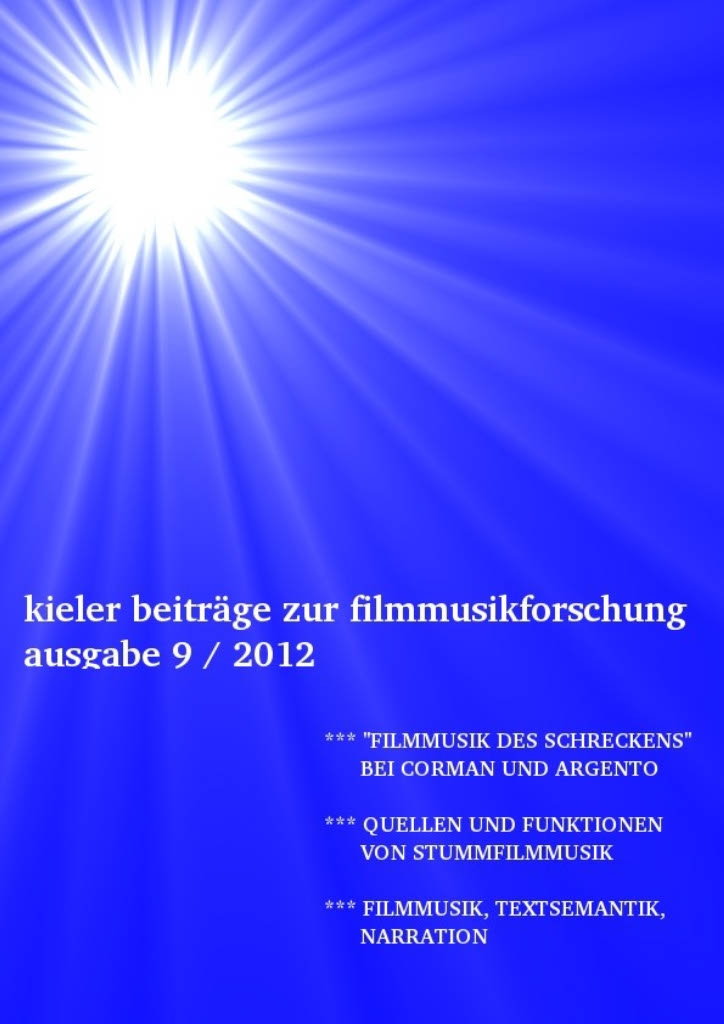Silent Strategies: Audiovisual Functions of the Music for Silent Cinema
DOI:
https://doi.org/10.59056/kbzf.2012.9.p46-76Schlagworte:
Filmmusik, Stummfilm, Audiovisuelle FunktionenAbstract
Studies on film music have often overlooked the difference between the audiovisual strategies of sound cinema and the ones of silent cinema. However, there are at least two audiovisual strategies which are peculiar to silent cinema: a ›bridge‹ function born from the improvisational nature of silent film music practice, and a ›interdiegetic‹ function, which takes advantage of the impossibility to hear the sounds of the world seemingly positioned beyond the silver screen. This paper comments upon these two strategies. A succinct review of the literature that already acknowledged the existence of these strategies, mostly in an indirect way (from Ricciotto Canudo to Sebastiano Arturo Luciani, Edith Lang and George West) leads to the discussion of examples from historical musical illustrations of silents (e.g. one by Hugo Riesenfeld for Cecil B. DeMille’s CARMEN, USA 1915) as well as from contemporary ones (e. g. Neil Brand’s 2004 music for THE CAT AND THE CANARY, USA 1927, Paul Leni). The change in reception conditions of silent films between the early 20th century and the present days is certainly relevant; however, this paper does not aim to offer an insight into cultural-historical context and reception, but to point out how the silent film language invited composers in different periods to develop a set of audiovisual strategies that are identical on a theoretical level.
Downloads
Veröffentlicht
Ausgabe
Rubrik
Lizenz
Copyright (c) 2023 Kieler Beiträge zur Filmmusikforschung

Dieses Werk steht unter der Lizenz Creative Commons Namensnennung 4.0 International.

